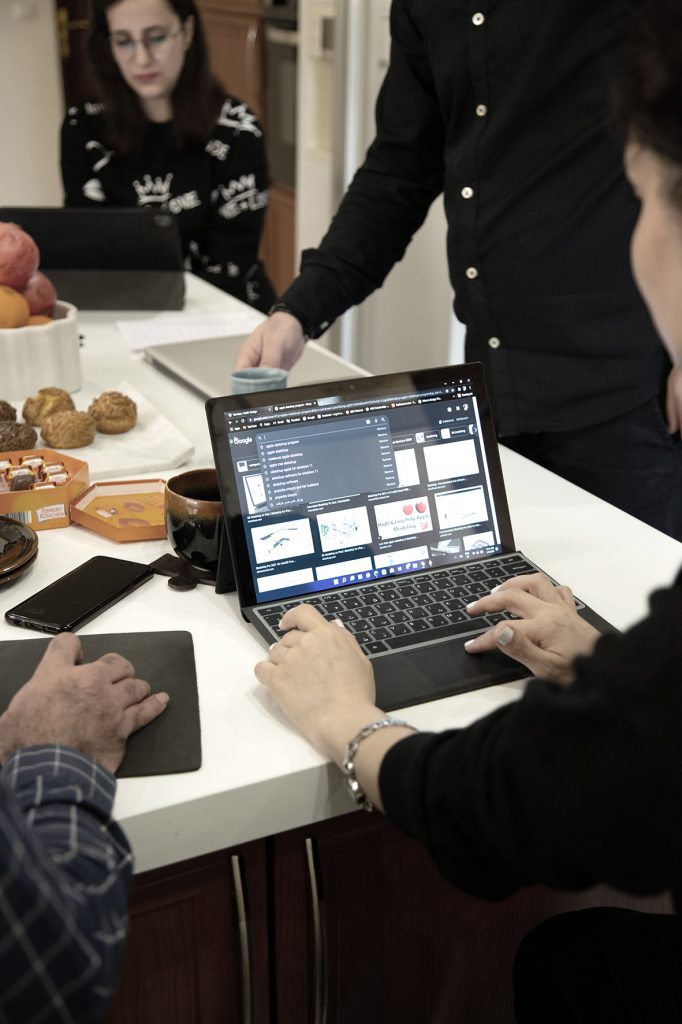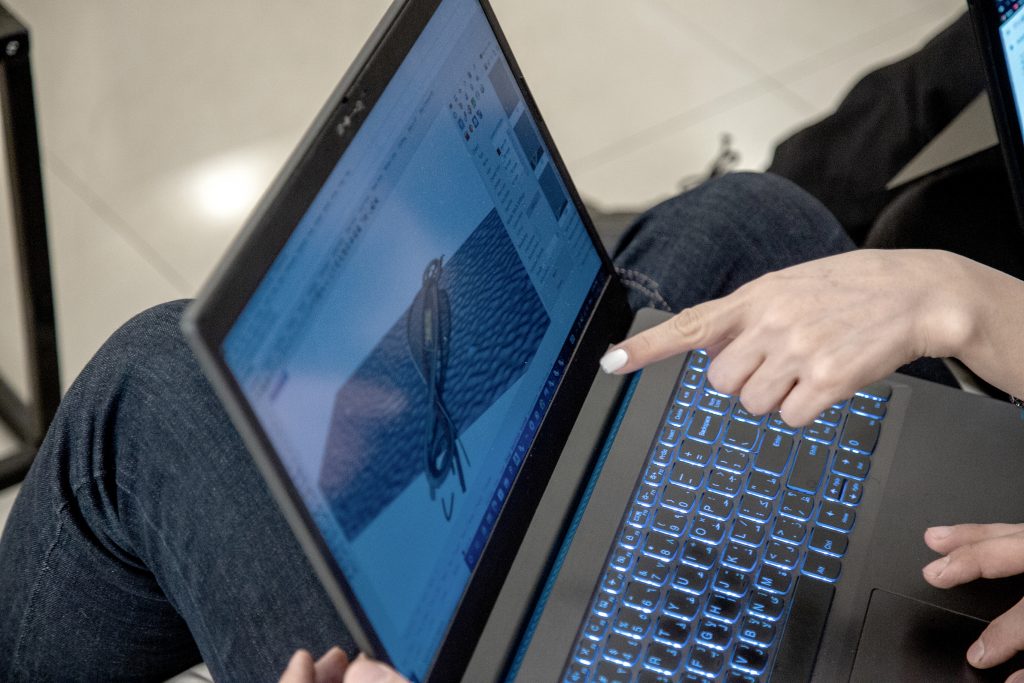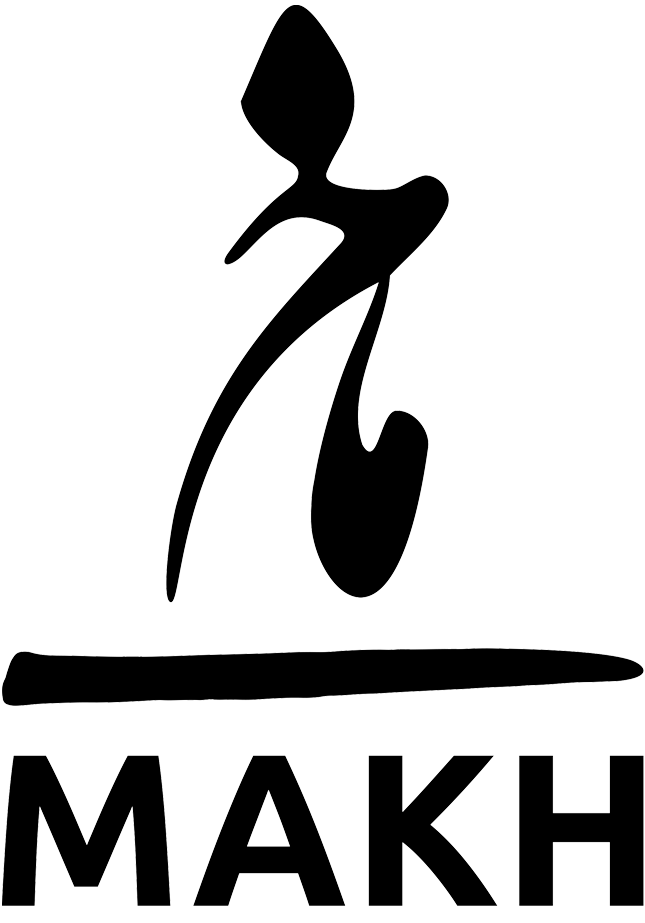

A sustainable relationship between people and products
My story and research about “Ethical Design Thinking” started with teaching
Project 6 to industrial design undergraduate students. The class content is about examining current technologies and possible future technologies. I tried different methods for teaching, but one of the favorite research assignments of the students was to examine and compare the technologies depicted in science-fiction movies of the past decades with the technologies available today. The purpose was to see what was the basis of those imaginations and whether those stories have an external appearance today or not. For example, the first science fiction film was made in 1902, on what mental basis was it formed? Does the desire to travel and explore space in the -14-minute film “Journey to the Moon” have a scientific basis? At that time, the knowledge of astronomy and aerospace engineering was being formed and the media was its external manifestation, or on the contrary, the media and stories are among the pioneers of dreaming in the minds of the visionaries of the scientific community. Which is the leader and feeds the other?
I did not have the right answer for this question in class. How can you draw a fine line between receiving an artist, writer, screenwriter, or creative director from existing sciences and his intuition? The purpose was not to find the exact answer, I left this area to other experts. The first goal of this class was to acquaint the design student with the scope, overlap, and synergy of science and imagination, which knowledge and mastery of all of them is practically beyond his reach. But he is affected by all of them.
On the other hand, another significant challenge that I witnessed every time in the classes was the concern and excitement arising from seeing future technologies, and the interaction and place of humans in today’s movies. The normal viewer of such films will probably only experience a momentary fear, but when a design student (a person equipped with creative tools or with inner potential) examines the films and sees, for example, that hologram technology is used In the movie “Star Wars” made in 46) 1977 years ago) it is completely available today, one must wonder which technology used in today’s movies will be added to human life shortly and what fundamental changes will determine?
Like many of you, I’m experiencing this love-hate, dread-passionate relationship with technology and design innovation. On the one hand, I’m very enthusiastic and excited about the great developments that are happening, but on the other hand, I see a big disruption happening and frankly, I’m a little scared. According to Marshall McLuhan, digital innovation has many side effects. We indeed shape products and tools, but after, subsequently they also shape us (thoughts, feelings, relationships and human society, environment and economy, etc.).
With the knowledge of this importance, should we feel more danger and worry or notice a glimmer of light? Maybe the answer is that it depends. It depends on which designer (who) this scientific knowledge and creative tools are in the hands of.
Until a few decades ago, when talking about designers, it meant product design, but the design process has completely changed in the past years, from product design and manufacturing of physical products to the design of mental stimuli with subcategories such as experience design, information architecture, interaction, user interface, and user experience have been moved.
Today’s digital architects are the designers of modern products, building the tools and services that foundation the modern economy. They design and operate products in 3 main sectors:
-System:
How everything works behind the sense
-Processes:
How users use the system
-Interaction page relationship:
How the products look
On the other hand, you probably agree that fifty years ago, the impact of poor design (does not fully meet the user’s needs) or bad design (causes harm to the user) was minimal. A confusing product might have reduced sales, or poor service might have reduced customer performance—but the number of affected audiences was usually small and the actual consequences relatively minor. But in comparison, modern designers can manipulate the formation of society. For example, a change in Facebook’s algorithm can affect the news that tens of millions of people see.
Along with this increasing power of design and designers today, we must also consider the fact that a design student or an experienced designer is an individual with all human coordinates, in a specific time and place context, and is ultimately a product and child of his time. . So before we say what a wonderful idea or what a wonderful product! Or ask what is going to be built? The most fundamental questions that must be asked and answered are:
Who (professional personality)
For what collection, company, or organization,
With what intention and purpose,
With what specialization does it design a product or service?

In short, while researching and working on different projects, I gradually learned that the richest tool used in design that can make a significant difference is the “human” itself.
In this regard, I discussed “ethical design thinking” with a focus on “human design” in two main sections:
+Designer as human:
Design ethics for designers with the aim of recognizing and accepting their professional responsibility
+User as human:
Ethical design for designers with the aim of recognizing and implementing human values in their designs
A comprehensive review of the mentioned topics requires another space, but if I want to briefly state in this preface:
“Human design” encourages designers to understand the values, human capabilities and vulnerabilities of their users and create products that deal with their vulnerabilities with compassion.
“Ethical design” refers to the design of products, services and experiences that prioritize human well-being, rights and values. and considers the ethical implications and potential impacts of design decisions on individuals, society, and the environment.

A comprehensive discussion about ethical values, examining the indicators and criteria of ethical design, stating the ways in which unethical design causes harm, the ethical frameworks of design decisions, the ethical code of designers and the statement of ethical design and human values and needs, and this topic as a whole to remain important and attractive, dear readers of BUSIGN magazine.
But until then, if I were to offer a little strategic tool to shed some light on the design process of your projects, it’s the same old tool that ethical designers consciously or unconsciously use all the time.
Basically, the business developer, coder, and owner of any business, as long as he focuses on his positive impact on others (ethics), realizes from experience that there are very simple and clear principles to act. Even for a very professional designer, the design is very simple yet complex.
He needs a central axis around which everything must revolve and be measured: human values
And it requires a tool that you must use before each step: the why tool.
No matter how much you have learned about all kinds of trends and design models, no tools such as pausing, thinking, and asking questions will fix your main work. You should know what every step you take is for, what effects and consequences it will have in the entire life cycle of the product or service, and what results it will leave for all stakeholders. Asking questions again and again, checking again and again why and how the product or service means that all appearances and excesses will be removed and nothing extra will remain, and what remains is the essence and heart of the story and as a result transparency. What remains is only a life-oriented goal and not just a human-oriented one.
If you, like me, have been affected by the concepts of “ethical design” and “human design”, I invite you to visit the “Human Design Studio” website and read the translation of the latest articles in this field.
By: Neda Salehi
A life-centered consultant and designer





